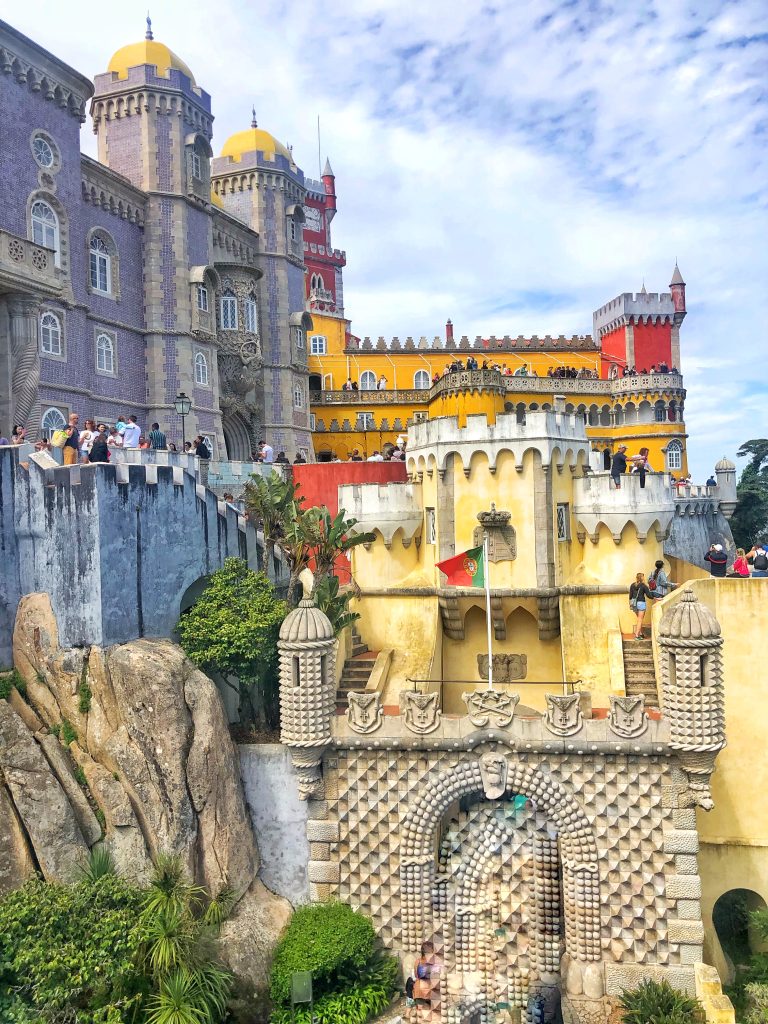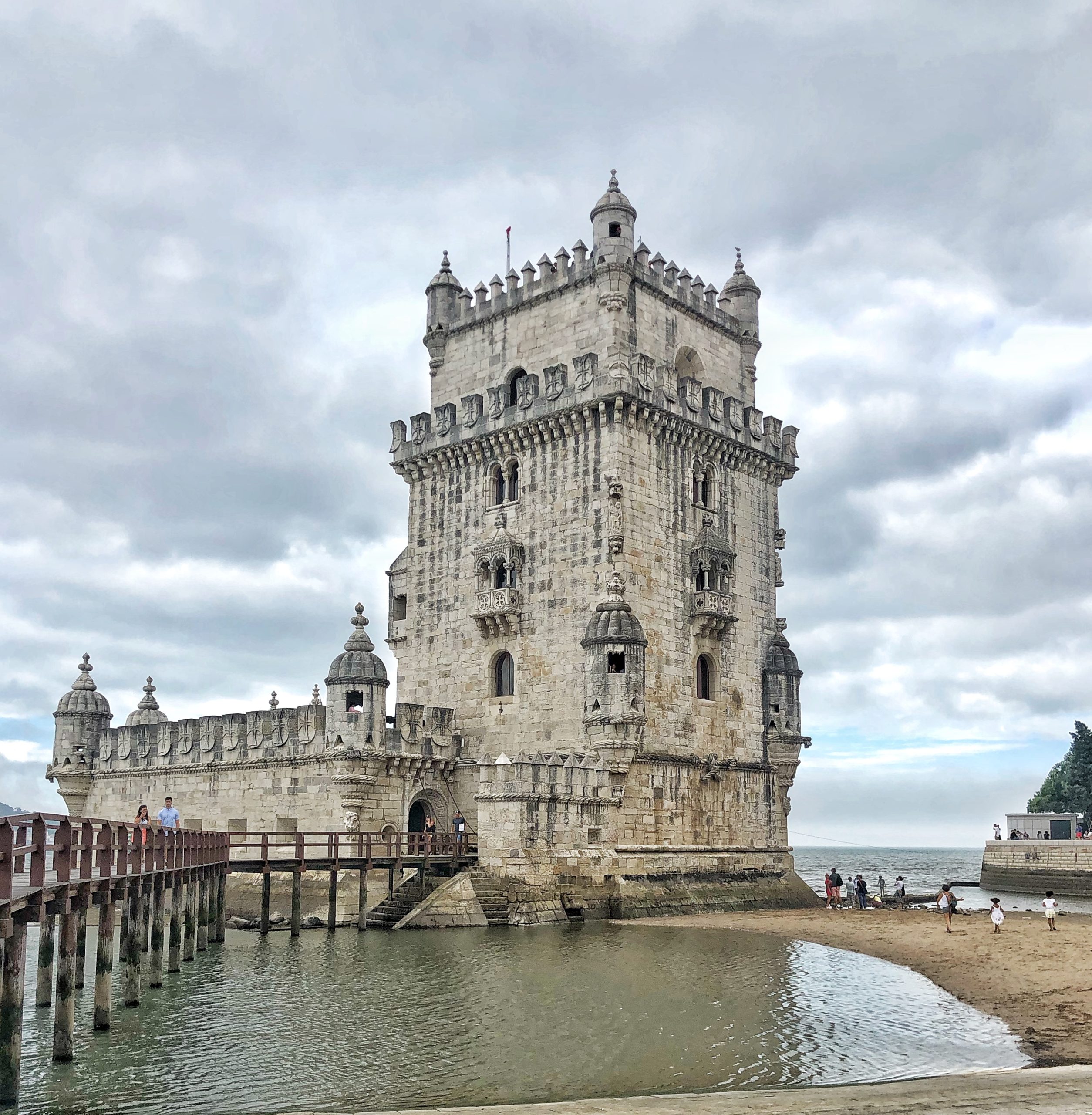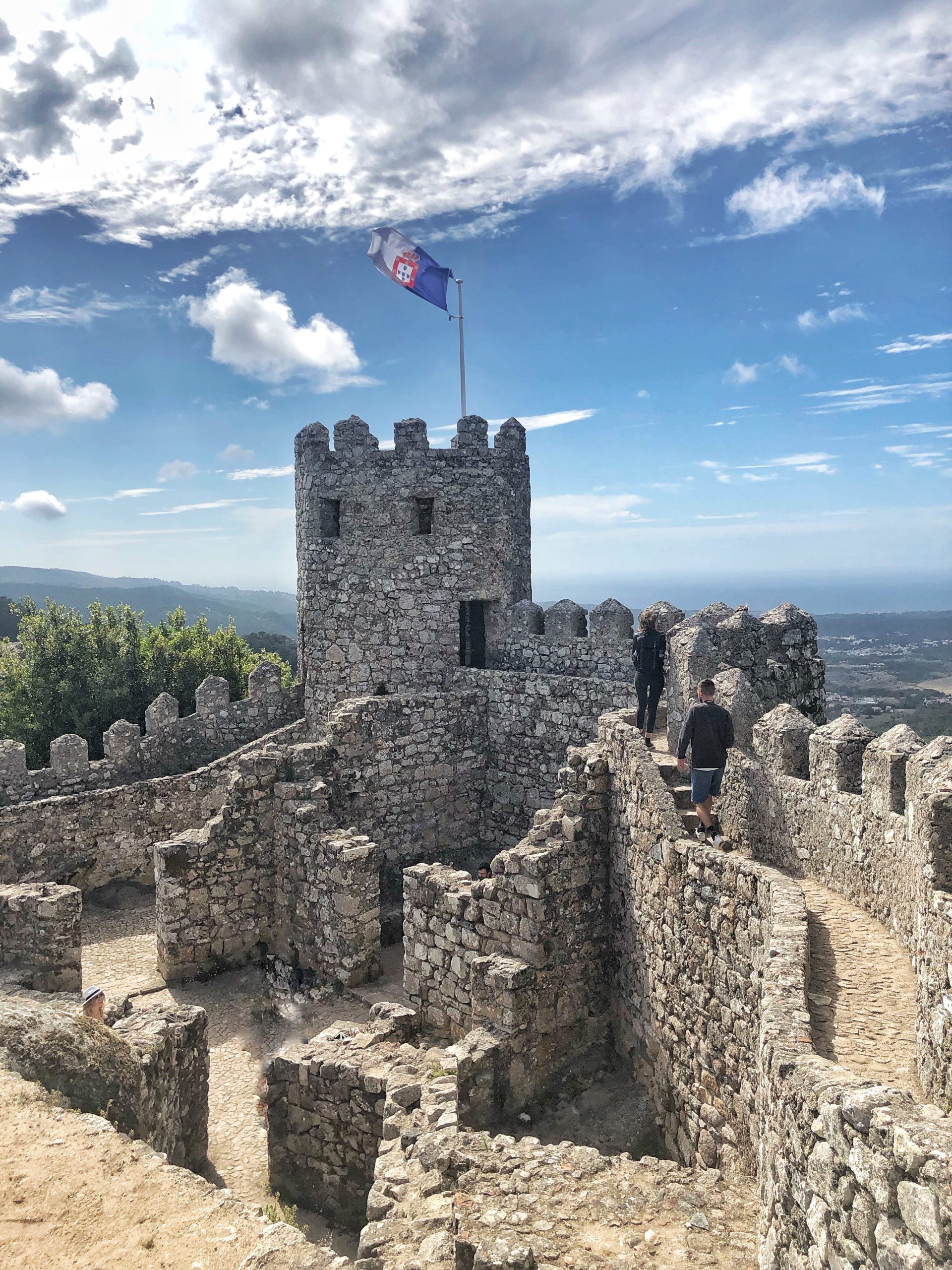With its abundance of Halal food, rich Islamic history and large Muslim population, Lisbon is perhaps one of the most Muslim-friendly European destinations. Combine this with the hot summers and it easily becomes an ideal location for a city break. We spent 3.5 days in Lisbon during the summer of 2019 and loved every minute of it. Here, we’ve put together a detailed guide on how to spend 4 days in the city and make the most of every second.

Getting There
Direct flights from both major and small airports in the UK fly directly in and out of Lisbon and if you are flexible on dates and times, you might even be able to get there for as little as £15 on certain Ryan Air flights. The main airport in Lisbon is Humberto Delgado Airport, also known simply as Lisbon Airport or Portela Airport.
The quickest and cheapest way to then get from the airport to the city centre is via bus. Depending on where your accommodation is located, you can check the Rome2rRio site for the latest updates on what bus to get and what times they run.
If you want more comfort and ease, then a taxi from the taxi stands at the airport is also an option. Alternatively, hotel transfers are always a guarantee and completely hassle-free.
Where To Stay
Despite Lisbon having a large Muslim population, this area (Odivelas) is located a fine distance from the city centre. After doing much research and spending some time in the different areas, we found that Avenida da Liberdade is perhaps the most Muslim-friendly. It is the upscale part of the city, with high-end shops and cafe’s dotted along the street and at night, it is very calm and quiet. Certain parts of the city are known to come alive at night but we found very little of this on Avenida. They have 5-star hotels such as Sofitel Lisbon Liberdade and Tivoli Avenida Liberdade as well as more budget-friendly options like Holiday Inn.
Avenida da Liberdade is also home to one of the cities main metro station and at the end of the street you’ll find the main train station: Rossio. This is the station visitors use to get to the beautiful Sintra.



What To Do
Lisbon is not short of activities that allow you to explore culture, history and art. One of the best places to start is by purchasing a Lisboa card, a 3-in-1 transport card, museum pass and discount card. They are available in 24/48/72 hour options so depending on the length of your stay in the city, choose the one most appropriate. Some of the benefits of the card include free entry into some of Lisbon’s best museums and attractions and unlimited free travel by bus, metro, tram and elevadores (lifts). This also includes a train fare to Sintra and Cascais.
The card is pre-ordered online via the official website and is valid for a full calendar year after its purchase date (just in case you need to postpone your trip), and is only validated upon its first use. Once you get to the city, you can exchange the email voucher for the physical card at any of the exchange offices located at the Lisboa Welcome Center (conveniently, this is on Avenida da Liberdade), Foz Palace and of course Lisboa Airport. Locations marked with an asterisk below are included in the Lisboa Card, either completely free or heavily discounted.
Day 1: Settling In
- Central Mosque of Lisbon: the main mosque of Lisbon, Portugal. Serving the capital city’s Muslim community, the mosque is Europe’s third largest mosque outside of Turkey.
- Marques De Pombal Square
- Explore the boutiques and cafes on Avenida Da Liberdade, including the famous Fábrica da Nata



Day 2: Belem
- *Jerónimos Monastery , Belem. One of the first monuments in Europe to be listed as a UNESCO World Heritage Site and dates back to the 1500s. It was paid for with the profits made in the spice trade with the East, and was home to the monks of the Order of Saint Jerome. These monks were responsible for the recipe of the famous custard tarts (the “pastéis de Belém” or “pastéis de nata”).
- Pasteis De Belem: In 1837, PDB began making the original Pastéis de Belém, following an ancient recipe from the Mosteiro dos Jerónimos. That secret recipe is recreated every day in the bakery, by hand, using only traditional methods.
- Tagus River, Belem
- *Belem Tower: A 16th-century monument that served as a point of embarkation and disembarkation for Portuguese explorers and as a ceremonial gateway to Lisbon. It was built during the height of the Portuguese Renaissance.
- *Museum of Art, Architecture, Technology (MAAT) Belem. Located on the riverfront of Belem, MAAT is spread over two neighbouring buildings — Portugal’s first power station and a modern construction. It has almost 3000 square meters for exhibitions and events and exhibitions are appropriate and fun for all ages and stages.



Day 3: Sintra
- *Pena Palace, Sintra: UNESCO World Heritage Park. An unmissable, stunning palace that looks like it has stepped out of a Disney book, this colourful castle stands on the top of a hill in the Sintra Mountains above the town of Sintra, and on a clear day it can be easily seen from Lisbon
- *Moorish Castle, Sintra: the imposing castle built by the Muslims when they ruled Portugal in the 8th/9th Century. You can walk along the walls and from the ramparts, there is an incredible panoramic view over the city, including a view of the imposing Pena Palace atop the steep hill.
Day 4: Central Lisbon
- Castelo D. Sao Jorge. Originally established in 200bc by the Romans, this castle has withheld time and between the 8th and 12th Centuries, it was strengthened by the Muslims who had taken control over the land. Today, we now see a heavily restored version of the castle, but stunning nonetheless. It is not unusual to see peacocks walkign freely around the garden. The castle is also host to exhibitions that include crockery and ruins dating back to the Muslim rule. At the Castle, you will also find one of the most famous viewpoints in Lisbon.
- *Tram Ride: Riding the trams in Lisbon is not only hugely efficient, but also one of the biggest tourist attractions. The city currently has five different routes and 58 trams, of which 40 are vintage streetcars. The heritage trams are small, nostalgic and an emblematic symbol of Lisbon, making for great photos. To read more about which trams are best to use, check out this post by Civitatis Lisbon
- *Rua Augusta: This is supposedly Lisbon’s liveliest pedestrian street, paved with the traditional cobblestone designs, and links the city’s two main squares (Rossio and Praça do Comércio). The street is lined with old and new fashion houses that are contrasted by the street performers, food vendors and bric-a-brac sellers. The highlight is the Rua Augusta Arch which provides panoramic views over the city.
- Praco do Comercio: This is Lisbon’s main square. It was built on the site where the old Royal Palace used to exist before it was destroyed by the earthquake of 1755. The southern end of the plaza is open and looks out onto the Tagus River. The other three sides have yellow-coloured buildings with arcades all along the façade. When the square was first built, the commercial ships would unload their goods directly onto this square, as it was considered the “door” to Lisbon. The Rua Augusta Arch is located on the northern side of the square. This is a lovely place to pause, people watch and soak in the atmosphere.



- *Santa Justa Elevator: Originally created as a form of public transport, this lift that connects the 2 neighbourhoods of Baixa Bairro Alto has become a tourist destination. The structure is built in the same style as the renowned French architect, Eiffel and at the top, an observation deck offers magnificent views over Baixa.
Getting Around
The public transport system in Lisbon is extremely efficient and easy to use. Your best friend will be the underground metro and as mentioned above, the Lisboa Card comes with unlimited free travel on bus, tram and metro. This means there is no worry of topping up or paying additional amounts for transport. Simply tap your Lisboa cards in and out of the stations and be on your way.
Our AHFJ advice would be to download the Moovit app: it gives you live updates of what platform to wait at, when the next tube is arriving and the quickest route options to your next destination.
To get to Sintra, you can catch a direct, 40-minute train from Rossio station. Once you reach the city, catch the 434 or 516 bus from the main road outside the station and it’ll take you up to the palace. Alternatively, you can complete the 1.75hr upward hike through the woodlands!
Where To Eat
Halal food is widely available in Lisbon and of course, a visit to the city isn’t complete without trying as many Pasteis De Nata – their famous custard tarts – as possible. Luckily for you, we’ve compiled a detailed Halal Food Guide to Lisbon with all your breakfast, lunch, dinner and dessert options.
You Might Also Be Interested In…
- Food, Hammam and Meanders: How to Spend 3 Relaxed Days in Marrakech
- 6 Underrated (but incredible) Experiences in Istanbul
- A Comprehensive, Luxury Halal Guide to the Stunning Scottish Highlands
- Travel Essentials For Every Muslim Traveller